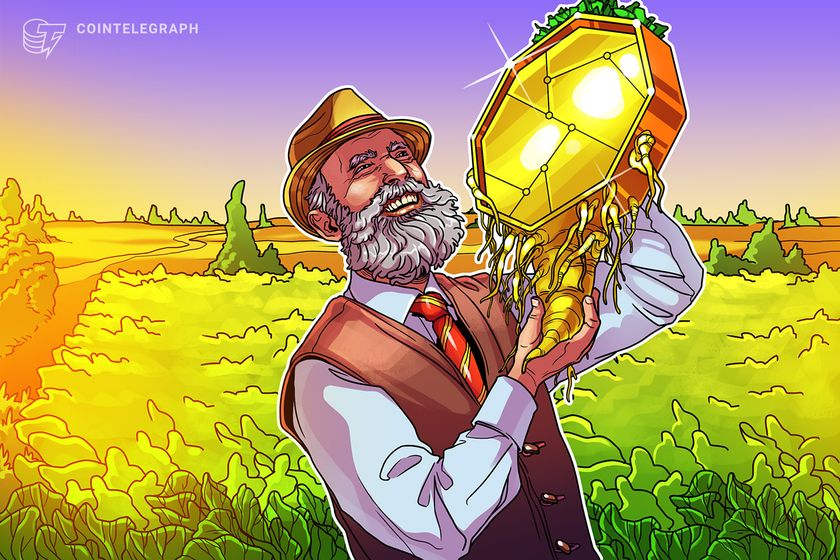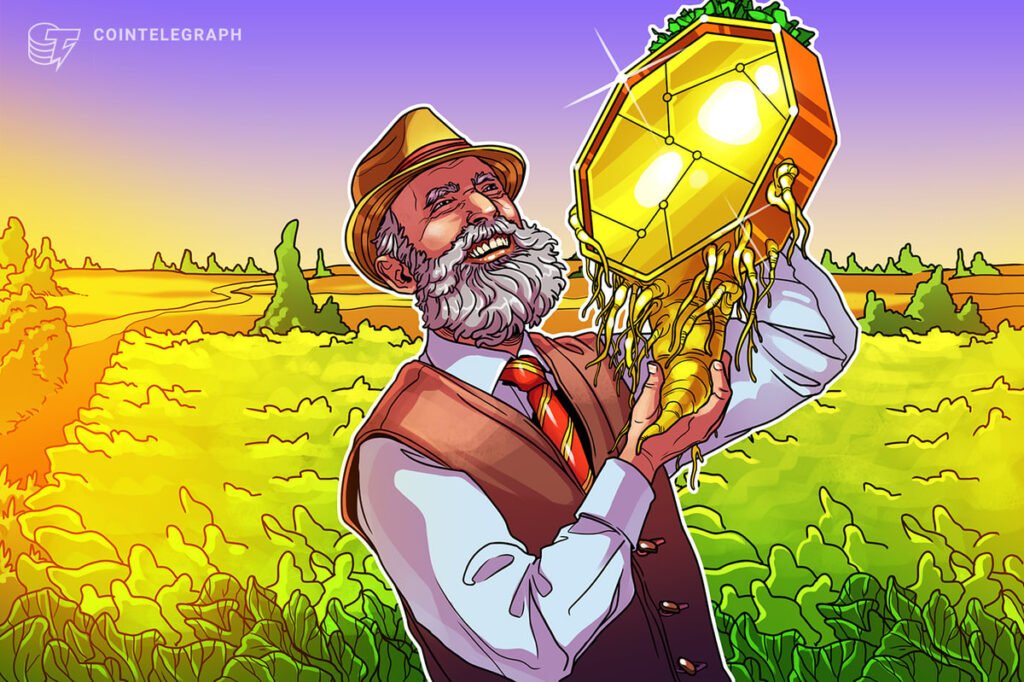
Opinion by: Yog Shrusti, co-founder and CEO of Farmsent
Foodies, take observe: In case you’re ever in Bahrain, strive machboos, a hen (mutton or fish) dish with rice. Ideally, go for a spot that serves it with recent, regionally sourced rosemary (actually brings out the flavour!), and whilst you’re at it, ponder on this: How do you develop rosemary on an archipelago of primarily arid isles the place rising something is a problem? The reply is vertical farming, and if you happen to’re questioning what that has to do with something crypto, let me let you know: Web3 is what this miracle of an business must reside as much as its true potential — and presumably ensure we will keep on as a species.
The boons of vertical farming
One may argue that vertical farming can also be the reply to challenges such because the degradation of fertile soil, which threatens to depart the planet with solely tiny pockets of farmland by 2050. It may additionally assist to alleviate world starvation, pushed in no small half by the erosion of fertile soil, making meals extra accessible to hundreds of thousands of individuals. It’s a easy equation: With much less and fewer soil to go round, we’d like one thing that helps us develop rather a lot in a decent area.
Equally easy is one other equation. It’s not onerous to see how much less fertile soil will imply much less meals. Shortage brings up the worth, as Web3 is aware of. Meals will get costlier, yr after yr. And when meals costs go up, different issues begin falling aside, too. The “keep on as a species” might need been a bit too dramatic, granted, however the hyperlink between meals availability and social upheaval is obvious.
Latest: How AI is revolutionizing agriculture
That being stated, vertical farming continues to be looking for its footing. Common progress pains, one would possibly argue, will go with extra maturity and technological evolution, however enterprise capitalists beg to vary. Vertical farms, initiatives that might save the life-critical agricultural business, are struggling to lift funds. As such initiatives normally require quite a lot of upfront funding, they’ll solely flip to main funds, not smaller gamers. In different phrases, conventional capital, with its common deal with short-term good points and an absence of imaginative and prescient, is failing an business that’s rising extra very important day by day.
Web3 has an answer.
DePINs are the reply
Enter tokenization. Let’s shortly contemplate a hit story from one other business: car-sharing. Autos are costly, so a car-sharing service wants quite a lot of capital to develop its fleet. By tokenizing several Teslas in its fleet, a Viennese car-sharing service raised a whole 1.6 million euros with barely any advertising and marketing bills. That’s clearly fairly sufficient to deliver fairly a couple of brand-new automobiles into the service with none mortgage shark fins to look out for. Can this method work for vertical farming, too?
Sure, very a lot so. The concept is just about the identical: You slice up the revenues generated by a vertical farm and allocate a few of these towards tokenholders. As high-tech and infrequently largely automated initiatives, vertical farms lend themselves properly to tokenization, with their sensors and varied different equipment hashing operational information onchain for observability and sensible contracts managing the reward distribution.
That allows the undertaking to generate the upfront liquidity wanted to deploy the expensive {hardware} and canopy different prices. The identical goes for normal farms, which have already got established shoppers and wish funds to scale up and innovate. This manner, architect initiatives don’t need to vie for the mercy of great VCs. They will take their concepts to the worldwide Web3 neighborhood, which might contemplate them and again those that appear price a strive. With this lifeline, vertical farms can attain the purpose the place their effectivity makes it attainable to compete with common farms throughout the board, not in some particular instances.
Blockchain expertise provides one other layer of transparency to the method. When every thing runs on sensible contracts, you may have clear visibility into the gross sales and revenues generated by the farm. This might give the undertaking’s backers a transparent overview of its efficiency and allow them to make extra knowledgeable selections. On high of that, onchain vegatables and fruits are much more traceable, enabling patrons to pinpoint how their greens had been sourced, which is nice for environmentally minded customers and can also be useful for provide chain administration.
The motion bringing Web3 into real-world industries and companies is rallying round decentralized bodily infrastructure networks (DePINs), Web3’s hottest sector, which additionally has the potential to turn out to be an agricultural superpower. Think about rooftop gardens in each metropolis, producing recent meals for native communities. With DePINs, this dream is nearer than ever. We’re not simply speaking about rising lettuce; we’re speaking about rebuilding our meals techniques from the bottom up for the long-term advantage of all of humanity.
The way forward for meals is vertical, decentralized, and scrumptious. Let’s develop!
Opinion by: Yog Shrusti, co-founder and CEO of Farmsent.
This text is for common info functions and isn’t supposed to be and shouldn’t be taken as authorized or funding recommendation. The views, ideas, and opinions expressed listed below are the writer’s alone and don’t essentially replicate or symbolize the views and opinions of Cointelegraph.
